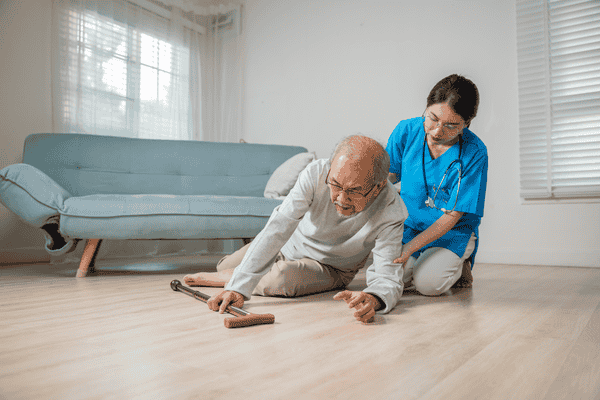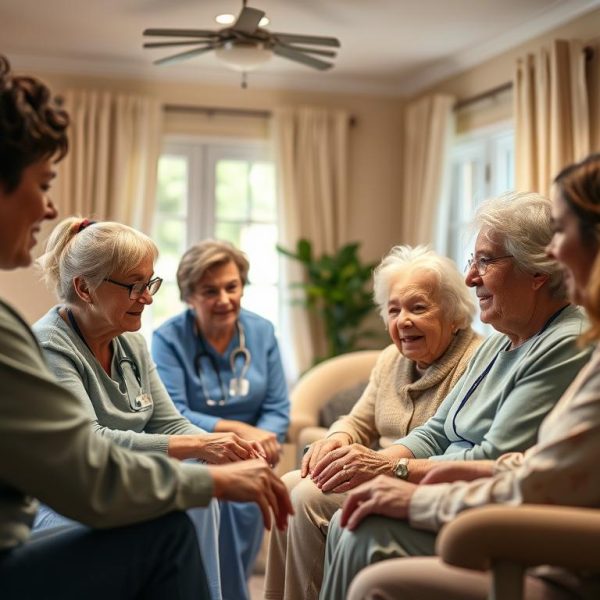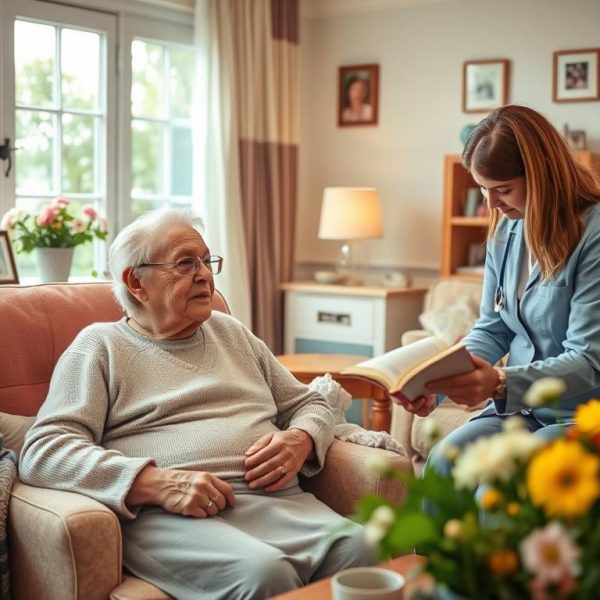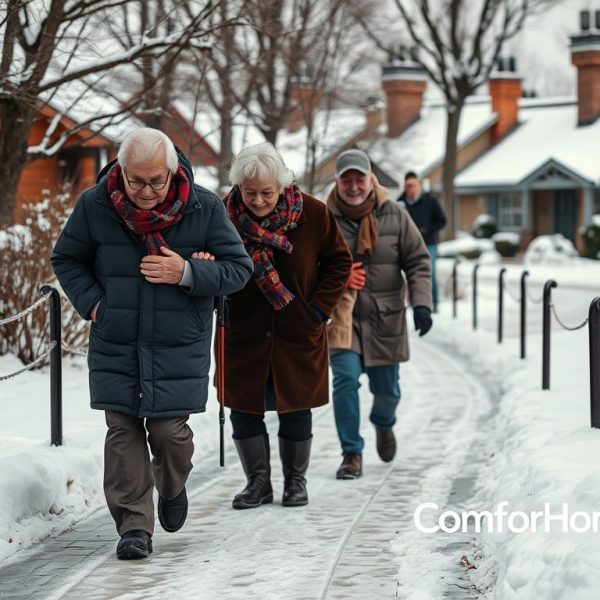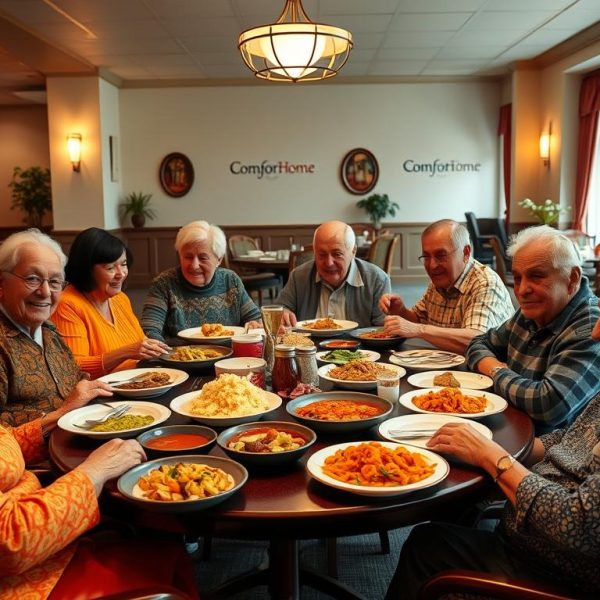As the sun dipped below the horizon, casting a warm glow over the quiet suburban neighborhood, Margaret sat on her porch, reminiscing about her vibrant younger days. At 78, she had always taken pride in her independence. But over the past year, she had experienced a few close calls—a moment of dizziness here, falls there. Each incident left her feeling more anxious and uncertain, like a fragile leaf caught in a gust of wind.
Margaret’s story isn’t unique; it mirrors the experiences of countless seniors. Falls are among the leading causes of injury among older adults, leading to a range of complications, from minor bruises to life-altering fractures. Understanding the common causes of falls can empower seniors, caregivers, and families to take proactive measures to ensure safety and maintain independence.
The Reality of Falls in Seniors
In the United States, one in four seniors experiences a fall each year. For many, a fall can be the beginning of a cascade of health issues. As we explore Margaret’s journey, we will unveil the dangers lurking in everyday life and identify effective strategies to prevent falls.
1. The Balance Between Mobility and Stability
Margaret had always prided herself on her mobility. Every morning, she would don her walking shoes and venture out for a stroll around the neighborhood. However, she began to notice that her balance wasn’t what it used to be. Like many seniors, she faced the inevitable decline in balance and coordination as her body aged.
- Inner Ear Changes: As we age, changes in the inner ear can affect balance. The vestibular system, responsible for our sense of balance, can become less effective, leading to unsteadiness.
- Muscle Weakness: With age, muscle mass decreases, making it harder to maintain stability. Margaret found herself feeling more wobbly during her walks, prompting her to slow down.
2. The Sneaky Influence of Medications
After her doctor prescribed medication for high blood pressure and anxiety, Margaret felt hopeful. However, she soon noticed that her head felt a little fuzzy, especially after taking her pills.
- Side Effects: Many medications come with side effects such as dizziness, drowsiness, or blurred vision. Margaret learned that certain combinations of medications could exacerbate these issues.
- Polypharmacy: The more medications one takes, the greater the risk of side effects and interactions. This phenomenon, known as polypharmacy, is common among seniors and can contribute to falls.
3. The Perils of Home Environment
Margaret took pride in her cozy home, filled with memories and trinkets from her travels. However, as she walked through her living room one afternoon, she began to notice potential hazards.
- Clutter: The accumulation of items on the floor, like shoes or books, posed tripping hazards. Margaret realized that her beloved knick-knacks were creating obstacles in her daily life.
- Inadequate Lighting: Shadows danced around her home as dusk fell. Margaret recognized that poor lighting made it difficult to see potential hazards, increasing her risk of falling.
4. Vision Changes: The Window to the World
During her annual eye exam, Margaret learned she had developed cataracts. This common condition blurred her vision, making it hard to see clearly, especially in low-light conditions.
- Visual Impairments: Age-related changes in vision can lead to difficulties in depth perception, contrast sensitivity, and peripheral vision. Margaret found herself struggling to navigate her surroundings, especially outdoors.
- Uncorrected Vision Problems: Failing to address vision issues can significantly increase the risk of falls. Regular eye exams are crucial for seniors to ensure that they have the right prescription and care.
5. The Impact of Chronic Conditions
Margaret’s health journey was complicated by a few chronic conditions. Her arthritis made it painful to move around at times, limiting her mobility and activity levels.
- Pain and Discomfort: Chronic pain can lead to decreased activity levels, which in turn can weaken muscles and affect balance. Margaret learned to listen to her body and adapt her activities accordingly.
- Other Health Conditions: Conditions such as diabetes, Parkinson’s disease, or heart problems can also impact balance and increase fall risk. Awareness and management of these conditions are essential.
6. Social Isolation: The Hidden Risk Factor
Despite living alone, Margaret cherished her friends and family. However, she had noticed that her social circle had shrunk over the years.
- The Loneliness Epidemic: Many seniors face social isolation, which can lead to depression and a lack of physical activity. With fewer opportunities for social interaction, Margaret found it harder to maintain her routine.
- Reduced Activity Levels: Social engagement often promotes physical activity. As Margaret’s social interactions dwindled, so did her motivation to stay active, compounding her fall risk.
7. Strategies for Prevention: Empowering Seniors and Caregivers
Recognizing the various factors that contribute to falls is the first step. Margaret, along with her family, implemented several strategies to enhance her safety and well-being.
- Regular Exercise: Engaging in balance and strength training exercises can significantly reduce the risk of falls. Margaret joined a local exercise class tailored for seniors, focusing on balance and mobility.
- Medication Management: Margaret began reviewing her medications with her doctor to identify any that could contribute to her dizziness. They adjusted her prescriptions and reduced the number of medications she was taking.
- Home Modifications: Together with her family, Margaret made necessary changes to her home. They decluttered her living spaces, added night lights, and installed grab bars in the bathroom for added stability.
- Vision Care: Margaret scheduled regular eye exams and followed her eye doctor’s recommendations. With updated glasses, she felt more confident moving around her home.
- Social Engagement: Margaret sought ways to reconnect with her friends and family. She started attending community events and reached out to friends for coffee dates. This not only improved her mood but also encouraged her to stay active.
Conclusion:
Margaret’s journey serves as a poignant reminder of the common causes of falls in seniors and the proactive steps that can be taken to prevent them. By understanding the various factors at play and implementing effective strategies, seniors can navigate their lives with confidence and independence.
As the leaves turned golden and the air grew crisp, Margaret found solace in knowing that she was taking control of her safety. With each step she took, she not only embraced the beauty of autumn but also the power of knowledge and resilience.
Through awareness, education, and supportive communities, we can help our seniors thrive in their golden years, reducing the risks and ensuring that they continue to enjoy life to the fullest. Whether it’s through exercise, home modifications, or social engagement, every effort counts in the quest for safety and independence.
